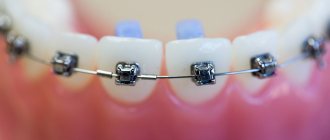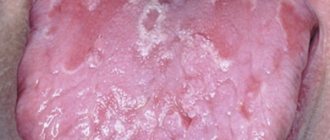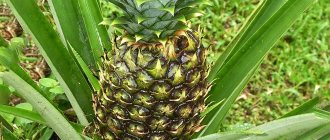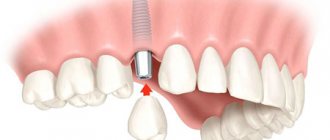A healthy human tongue should be pink, with a matte tint. A slight morning bloat, which decreases after eating, is also within normal limits. Alarm should be caused by the appearance of heavy plaque, usually resulting from an inflammatory process, or a change in the color of the back of the tongue. Sometimes you can see a blue tongue in a person, the reasons for this may be different. The most harmless of them are culinary or natural dyes; simply by eating some berries you may notice a change in the color of your tongue or lips. However, the cause is not always harmless; most often, a change in the appearance of the tongue is caused by various pathologies, including diseases of the stomach, pancreas, liver, etc.
Coated tongue
Everyone can check the state of the language and draw certain conclusions on their own. However, for this it is necessary to know exactly what indicators and factors tell us about certain changes in the state of the body.
Variations in the color of the tongue can be in a very wide range: whitish, brownish, blue, gray, yellowing may be observed. By the way, if a child suddenly has a strange tongue color, you should not immediately raise the alarm. In most of these situations, it turns out that the unusual coloring is caused by something quite ordinary that got into his mouth. These could be felt-tip pens, not very high-quality drinks, chewing gum, caramels . In adults, the cause may be recently drunk coffee or excessive smoking.
The next thing you need to pay attention to is the structure of the plaque on the tongue. Knowing what a healthy tongue looks like, you can easily notice the following differences from it:
- Dryness.
- Heterogeneity of plaque.
- Oiliness.
- Looseness.
- Density.
Be sure to set the thickness of the plaque, which is an extremely important parameter. If, during a visual examination, an increase in the degree of plaque formation is noticed, through which the surface of the tongue ceases to be visible, then control over the state of your body must be tightened. If the plaque condition does not improve within 24 hours, it is recommended to visit a doctor and undergo an examination.
Spots may appear on the surface of the tongue, the localization of which makes it possible to determine the location of the source of pathology in the body.
The degree of plaque pain is determined by the ease of its removal. In a healthy person, the layer of plaque is translucent, can be easily removed during morning hygiene, and does not appear during the day. If deposits appear as a result of a malfunction of any organ, then it is almost impossible to remove them completely; moreover, they gradually thicken, acquiring a color characteristic of the underlying pathology.
Normal plaque has a slightly whitish tint, which practically does not affect its transparency. It is easy to remove, has no odor, and the tissues of the tongue are visible through it. In cold weather, slight yellowing may appear.
What is it needed for
In Dark Souls 3, a pale tongue will be needed for several things at once:
- Increase your level in the Fingers of the Rosary covenant.
- Receiving the Key to the hall with the lift for the battle with the dark spirit from Leonhard. To do this, you must have at least 1 pale tongue in your inventory.
- Changes in the appearance and parameters of Rosaria, the mother of rebirth in the Temple of the Deep.
For this reason, if you want to do one of the things listed above, you need to find an artifact somewhere. We'll talk about this a little below.
Types of raids
The plaques that occasionally form on the surface of the tongue are very diverse. They differ in color, outline, and localization. Moreover, the color of the tongue and the disease are often directly related. In infectious pathologies, a dense whitish coating is usually observed that covers the entire surface. There is almost always a simultaneous increase in temperature.
If white deposits appear on the middle part of the tongue, and cracks form on the sides, then some pathological lesions of the stomach or intestines can be suspected. Having noticed the first manifestations, it is recommended to change the diet to a more easily digestible one, limiting salt and fat. The appearance of pain indicates the need for emergency examination by a doctor.
White deposits that appear on the front of the organ are evidence of problems with the respiratory system, with the most common cause being tobacco smoking. At the same time, sometimes a person’s speech changes tonality. Developing dysbacteriosis often leads to a fungal infection, manifested in particular by the appearance of whitish spots on the entire surface. Quite often it develops as a result of improper treatment with antibiotics.
An alarming signal is the appearance of a red and white spotted coating. This is what the symptoms of scarlet fever look like. Having noticed such formations, you should immediately seek medical advice; a timely and effective treatment method will allow you to quickly get rid of the pathology without any consequences.
If your tongue turns yellow, you should pay attention to the amount of deposits. A small amount of yellowish plaque should usually not cause concern. However, the intensive formation of a thick layer allows one to suspect the presence of foci of inflammation inside the gallbladder. In this case, you should pay attention to the presence of unpleasant sensations under the ribs on the right side. These are the signs of developing cholecystitis.
A burgundy coating over time turning into a brown crust often indicates food poisoning. If it is small and passes quickly enough, then coloring can occur due to the use of food (natural) dyes, for example, chocolate or coffee. The prolonged presence of such deposits usually indicates dysbacteriosis.
Carrying out diagnostics
It is best to diagnose macroglossia in utero. Currently, with ultrasound of the fetus, norms for the size of any of its organs at various stages of pregnancy have been developed. There are optimal sizes for the length and width of the tongue. Often, during intrauterine examination, protrusion of the tongue outside the mouth is noticeable.
The final conclusion is given by specialists after several ultrasound examinations over 1 – 2 months.
More often, a full diagnosis can be established only by the 30th week of pregnancy.
After the birth of a baby with this pathology, he will need a number of consultations with an ENT doctor, an infectious disease specialist, a geneticist, an endocrinologist, and an oncologist.
And only after a detailed examination (using clinical analysis and instrumental methods) is a treatment plan for the disease developed.
Blue tongue
Some people notice that their tongue has a blue tint. Naturally, this attracts attention and an explanation needs to be found as to why this happens. A blue tongue in a person, if it is not colored by berry juice or other dyes, is a fairly important signal of serious health problems.
Why can the tongue turn blue? This coloration may appear as a result of any serious problem in the functioning of the cardiac system. This most often occurs in heart failure. Cardiopulmonary failure with circulatory problems is especially clearly indicated by the localization of cyanosis on the lower parts of the tongue. In this situation, it is advisable to analyze the general condition, summarize all unpleasant sensations and contact a medical specialist for examination.
If cyanosis appears on the upper plane, then this is almost accurate evidence of the onset of progression of cardiovascular failure, while the remaining symptoms (pain, weakness, feeling of heaviness behind the sternum) may not yet appear. Timely response and implementation of a set of medical measures can often prevent a heart attack.
The tongue may also have a bluish tint. In addition to some disruption of blood circulation, this may reflect the development of the initial stages of scurvy. If a blue plaque suddenly appears in the area located directly in front of the pharynx, then the cause must be sought in a violation of renal activity. Normalization of the functioning of the adrenal glands (proper production of hormones) usually leads to the disappearance of such spots.
Quite rare, but sometimes occurs, a bluish tint appears due to poisoning with heavy metals, for example, mercury. Only a specialist can identify such a lesion after conducting a serious examination.
Causes
Macroglossia can be either a local (local) manifestation or have a generalized nature. This disease can occur in many pathologies of the human body. As an independent disease, macroglossia can occur when:
- inflammation involving the lingual area (low glossitis of the tongue):
- rhinoscleroma with spread to the upper respiratory tract;
- open bite;
- acute angioedema;
- with the accumulation of pus due to an abscess in the oral cavity;
- a progressive cyst or tumor with damage to blood vessels (lymphatic or circulatory);
- hemorrhages accompanied by a rush of blood to the lingual tissue;
- “neurologically flaccid” tongue syndrome;
- impaired venous or lymphatic drainage in the lingual tissue;
- oral candidiasis.
However, macroglossia often occurs with such serious congenital damage to the body as:
- cretinism or other organic brain abnormalities;
- genetic disorders (Down syndrome, etc.);
- hypofunction of the thyroid gland and the development of myxedema;
- acromegaly.
Also, increased sizes of tongue tissue can accompany metabolic diseases such as:
- amyloidosis (deposition of amyloid in the tongue, when it becomes waxy, dense, with smoothed papillae);
- glycogenosis;
- pellagra (tongue red and ulcerated).
Often, forward displacement of the tongue can be observed in children as a consequence of their bad habit of tongue sucking.
Macroglossia is sometimes misdiagnosed in people with a small lower jaw.
The disease is often called “constitutional”, as it is common in obese men who have an increased love for food.
Macroglossia also occurs in severe infectious diseases such as tuberculosis or syphilis.
Blue plaque in a child
Every young mother needs to make a daily morning examination of her child’s mouth a mandatory procedure. It should be borne in mind that a small whitish layer, which is easily removed by hygiene procedures or disappears on its own after eating, is the norm. But the appearance of a thick layer or a change in color should cause serious concern.
It is especially necessary to react quickly to a child’s blue tongue. Why should the blue tint of the tongue attract such increased attention? This shade serves as one of the main signals that can reflect the occurrence of a number of pathological problems that begin to progress in the important organs of the child. With such a change in color, problems with the respiratory system, heart (arrhythmias, angina pectoris, etc.), circulatory system, and kidneys can be suspected.
In such a situation, parents are advised to immediately consult a doctor. Young children are not always able to fully describe the sensations that arise, and young parents are not always able to correctly identify what the child is describing. That is why such an important signal should encourage parents to visit a medical facility. Another reason for a blue tongue in a small child may be disorders of the nervous system. With such problems, seizures or cerebrovascular accidents are usually observed simultaneously.
Structure and functions
The tongue is a muscular organ without bones, covered with a mucous membrane.
Main functions:
- is directly involved in the pronunciation of sounds;
- determines the taste of what a person eats and drinks;
- is an integral element of the digestive system - it carries out the primary processing of food before it enters the esophagus.
The structure of the organ is quite simple, but very interesting. The tongue is divided into two parts: the back - the root and the front - the body or, as it is also called, the back, which has a velvety structure. The top is covered with papillae, which are responsible for taste buds.
Prevention
To avoid the reappearance of small red dots on the tongue, you must carefully follow a number of recommendations:
- Eliminating bad habits.
- Scrupulous personal hygiene of the oral cavity, as well as good quality toothpaste and brushes.
- Review your diet and get rid of fast food products that are rich in hot spices.
- Carbonated drinks should not be consumed, especially if they contain a large number of dyes.
- Strengthening the immune system.
- Periodic visits to the doctor.
- It is recommended to harden children, carefully choose a diet, and also exclude the intake of any allergen.
Home Remedies
Apart from the medications prescribed by your doctor, there are some home remedies that can be successfully used to solve the problems associated with tongue peeling.
Salt
Salt may be the best remedy for a white coated tongue. Its rough texture can act as a natural scraper to remove dirt and dead cells. Another important fact about salt is that it has antiseptic properties that will help kill the bacteria that causes bad breath.
Options for using salt to remove white plaque:
- First, you need to sprinkle some salt on your white coated tongue and gently rub (scrub) it with a toothbrush for a few minutes. After this, rinse thoroughly with warm water. To achieve good results, this process must be repeated three times a day.
- Another method that may be useful is to stir one teaspoon of salt in a glass of warm water. Rinse your mouth thoroughly with salt water and then spit it out. This procedure must be repeated several times a day until the condition improves.
Probiotics
Using probiotics is another good way to treat a white coated tongue, especially if it is caused by Candida. The ingredients in these medications, such as acidophilus and lactic acid bacteria cultures, actually help in inhibiting the growth of bacteria and fungi in the mouth.
How are probiotics used?
The powder of one probiotic capsule is mixed with a small amount of water. Then after you have brushed your teeth, you need to rinse your mouth with this solution. This should be done at least once a day for one week. In addition, yoghurts with live bacterial cultures can be successfully included in the diet.
Uses of vegetable glycerin
Another very important home remedy for tongue peeling is the use of vegetable glycerin. It is especially successful in using it in cases where the mucous membrane of the tongue, covered with a white coating, peels off. Its use is even more effective if you have dry mouth.
To use this remedy, you need to apply some vegetable glycerin to your tongue and gently brush it with a toothbrush. When finished, rinse your mouth with warm water. This procedure must be repeated until the tongue acquires its natural pink color.
Other Home Remedies
Other home remedies that can help solve the problem of tongue peeling include:
- vegetable oils;
- hydrogen peroxide;
- Aloe Vera juice.
Features of regular care
In order to maintain good health over a long period of time, it is necessary to pay considerable attention to hygiene, including the process of cleaning the tongue. To do this, you can use the following tools:
- Classic toothbrush.
- Plastic scrapers with a spatula tip.
- Spoons in the form of attachments for an irrigator.
- Devices that combine the functions of a brush and a scraper.
Modern medicine recommends cleaning after meals, in the morning and evening, to remove plaque and food debris. Cleaning is carried out evenly and smoothly; after cleaning, the instrument must be rinsed. It is advisable to change the device every 2 to 4 months for hygienic cleanliness.











